Sidetracks And Detours present PASS IT ON Weekly Walkabout 25 Sunday 5th November 2023
Sidetracks And Detours
present
PASS IT ON
Weekly Walkabout 25
Sunday 5th November 2023
Despite the publication date of this issue, I shall refrain from describing it as a crackerjack of a supplement. To be honest, I´m not that sort of guy. We don´t need images of sky rockets and sparklers to illuminate our reflective magazine about the arts. Instead, I´ll confirm that issue 25 contains, as always, many of our excellent volunteer writers, with their news, previews, interviews and reviews from around the world, and all across the arts, of live and recorded classical jazz, classical and Americana music, some of it brand new and some simply well-remembered. In this issue we also carry a poetry feature and an Island Insight into how Halloween and even bonfire night is celebrated here on Lanzarote. We confident you´ll find pieces to enjoy, and whilst you have a read through you could seek out and listen to Jenny Bray´s new single, or to Steve Bewick´s latest Hot Biscuits jazz mix-cloud selection.

CONTENTS

Researching History
Accent on Speech – English as she is Spoke essay by MICHAEL HIGGINS
Music Is…previewed by JAZZ IN READING
Jazz On Air
Hot Biscuits presented by STEVE BEWICK
recorded Jazz
Xxxx new single by Jenny Bray
Preview by JOINED UP JAZZ
Live Music: Rochdale Music Society present Soprano Nicola Mills
review by GRAHAM MARSHALL
Live Music: Manchester Music Festival
The Emerson String Quartet Final reviewed in New York Times
noted by ALFRED MICHAEL

Music in Portsmouth
The Renaissance Choir
St Peter´s Church, Petersfield, October 2023
Review by PHILIP YOUNG
Music in Portsmouth
Chichester Music Society
Miriam Teppich & Pavlos Carvalho
review by CHRIS LINFORD
A Reader´s Perspective
All Points Forward
Book Into Good Music suggests PETER PEARSON
A Place For Poetry
by THE POET IN THE RAIN
Island Insights
We Don´t Do Halloween says NORMAN WARWICK


Researching History
Accent on Speech – English as she is Spoke
essay by MICHAEL HIGGINS
In last week’s PASS IT ON I mused over a possible October/November Holiday for Britain. Currently this blighted land has seven holiday days during winter and spring, and only one between late May and Christmas. My Canadian novelist friend Jill Shakley and I were comparing the Canadian and American Thanksgiving Autumn or ‘fall’ holidays with Britain’s own cultural celebrations at this time. And it is culture that always comes to the fore.
Jill writes PG Wodehouse era light novels and is continually querying British attitudes and experiences of that time, often asking me to clarify points of speech, grammar and terminology of the 1930s.

I cannot help much, having to point out that books by Wodehouse (left) , particularly the Jeeves and Wooster stories, are based in London, what Bertie Wooster refers to as ‘the old Metrop’, and uses the received standard pronunciation of the upper middle and aristocratic classes of that time.
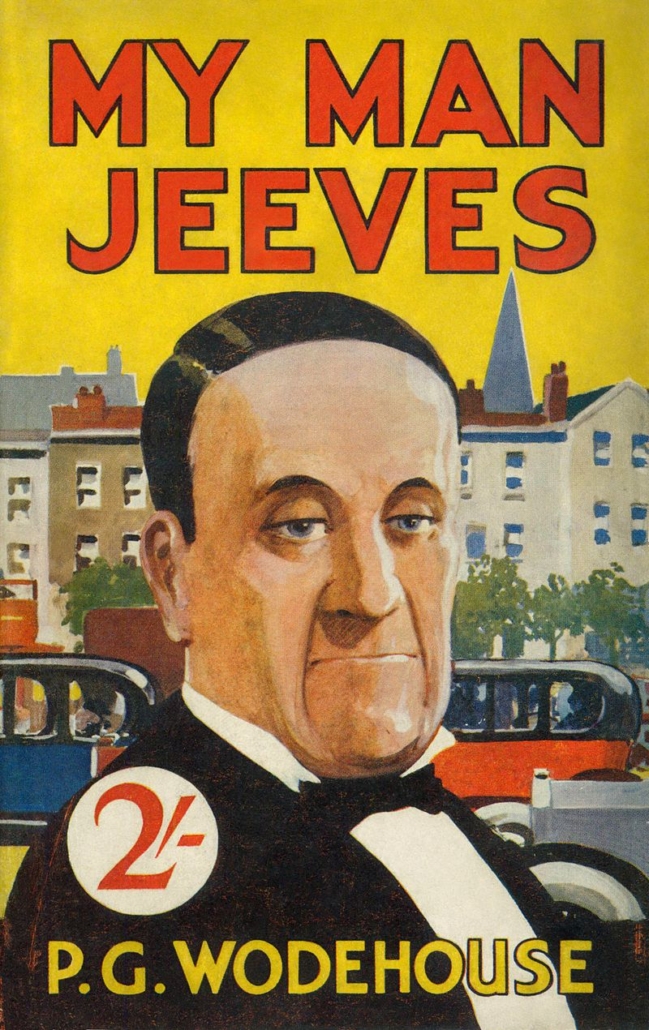
North Americans have a quaint sense that the ‘British Accent’ is this and, excepting Cockney, that erstwhile London lower class accent, seem to be blissfully unaware that England, and the rest of Britain has many other regional modes of speech. So Jill’s queries are mainly on London and perceived Britishness, an expertise in which I do not have.
I live approximately 200 miles north of London and speak with a Lancashire accent. I also use local dialect, whereas in Canada one can live 200 miles or more from Ottawa and have the same accent. Dialect there does not exist. And as for my Lancashire accent, my new classmates in Canada burst out laughing when they heard me speak for the first time. I died of embarrassment. Of course dialect does not feature in most English fiction unless the author wants to show a usually lower class person speaking in an uneducated manner. In this respect I rather exasperated myself in trying to explain to Jill that Northern Ireland is different from the Republic of Ireland in speech, with its own distinct Ulster brogue in both its ‘harsh’ and ‘soft’ forms. Going back to Ottawa one could detect a Quebec accent in those francophone Canadians working in the capital as bilingual tour guides, museum curators and government officials. But even here and across the provincial border of Ontario and Quebec the French spoken is not the same as that of France, or at least the ‘Parisian French’ Canadians were taught when I was in school there. .
Nor, as I tried to explain to Jill, Is ‘Parisian French’ so highly regarded in France where the speech of the capital is often regarded by the provinces as ‘vulgar’. Indeed I recounted how different was the German spoken in Innsbruck as a Tyrolean dialect (Tirolerdeutsch) from the Swiss German (Schwyzertuech). All European countries have regional dialects and local accents even in this day and age. Standard German is often spoken as Hochdeutsch (High German) and as in Standard English helps us at least to read a language in a common way.
And all languages and accents change over time. Alas for some the posh and sometimes silly sounding English, with clipped speech and laboured vowels so commonly heard in films of the 1930s and 1940s have since the 1970s been sadly declining. Hence the language of Jeeves and Wooster and the public schoolboy world of the Billy Bunter books, and indeed the RAF officer’s hunting ethos of ‘Tally ho chaps’, are now mere echoes of a former time seen as humorous and joke-worthy.
Ever since the Beatles crashed through the RSP barrier in 1962 with their Scouse (Liverpool) accents, the Newcastle band the Animals with their Geordie ( Newcastle upon Tyne) , and the Rolling Stones with their London accents – mixed with Mick Jagger’s mock cockney and the isolated Brian Jones’s posh grammar school Cheltenham accents- the world of concert hall, TV and film has never been the same.

Now a new study has come out bringing the London world even more into view. According to researchers at Essex University, analysing a sample of voices of young adults aged 18-33, found that Britons in London and south east England have clearly departed from the old days of the overtly class-based post war accents epitomised by ‘the clipped vowels in the King’s English of BBC presenters.

Likewise the working-class Cockney speech of film stars such as Michael Caine and Barbara Windsor’. RSP and Cockney have been overtaken by three new accents- Standard Southern British English as spoken by Ellie Goulding (left) Estuary English as spoken by Adele, and multicultural London English as spoken by Stormzy. (right)
Of those sampled 26 percent spoke Estuary English, spoken in Essex and the Thames Estuary. Speakers include Stacey Dooley, Olly Murs and Jay Blades. Multicultural London English speakers comprised 25 percent of the sample, and included footballer Bukayo Saka , rappers Little Simz and Stormzy. The largest group at 49 percent were the Standard Southern British English speakers, who might be regarded of the inheritors of old RSP, save for the ubiquitous glottal stop which has crept into words with an internal ‘t’. Alas for Wodehouse fans the researchers found no evidence of young adults speaking either RSP or Cockney.
Speakers of SSBE and Estuary English tended to be white, while cosmopolitan London English speakers tended to be Asian British or Black British. Of course in Wodehouse’s day there were few non-white speakers in London and in the rest of England and the now- superseded English of Jeeves and Wooster is seen as very dated indeed.
Which is a shame if we remember the precise , ‘posh’ accent of the young late Queen Elizabeth and how her accent softened over the years. King Charles however speaks very RSP, while his son Harry speaks in new SSBE. Prince William, the Prince of Wales, also does not speak old RSP unlike his father. SSBE has come out tops.

But like ‘posh’ Brian Jones (left), the founder of the very rascally Rolling Stones, it can often be refreshing to hear the old fashioned tones of the King’s English ‘as she is spoke’ (or at least once was). I passed on the University of Essex’s survey findings to Jill as a way of showing the changed culture and language of Britain since Bertie Wooster roamed the streets of the’ Metrop’ uttering immortal phrases such as ‘I say, Jeeves, jolly good, spiffing old chap, rum do, bally good and Right-ho’

I say, what’s to become of the old mother tongue my old chums. If only I could speak either the old King’s English or Cockney, a vanished world that some say needs preserving and hopefully reviving. Like the old Cornish Language, once languishing among a few scholars and half remembered phrases of the old, and which is now the fastest growing Celtic Language, is there hope of a revival to boost our spirits and satisfy Woodhouse and Frank Richards readers?
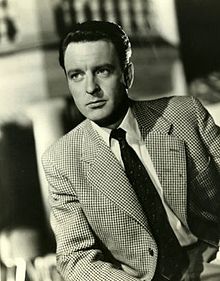
But with the old fine RSP actor Donald Sinden taken from us and Jolly good RSP speaker Benedict Cumberbatch, a product of RSP training, facing an anti- establishment tide and the ‘dumbing down of speech’ time and tide seem to be flowing in the wrong direction Only time will tell. And as for Michael Caine, (right) having made another ‘last film’ into his nineties there is always hope for Cockney.
But it is still much of a mystery to me nearly 200 miles away and I must leave it to others. Crack on Jeeves! This will not go well down at the Drones club!.Ah well, to read Wodehouse is to breath an air of pleasant silliness that spans all manner of speaking and understanding. I am sure Jill would agree.


Live Jazz Music
Music Is…previewed by JAZZ IN READING

photo 1 The start of November brings a glimpse into a live set from Munch Manship, Saxes with Paul Kilvington on keyboards.
Also in the broadcast is a selection of vibraphone players’ music from Lionel Hampton and Benny Goodman, `stealing apples`.

photo 2 We will also play Milt Jackson, `bags groove`, Victor Feldman playing, `Serpent’s tooth` and Terry Gibbs Quartet with Terry Pollard, Piano and Vibes.
we will be finishing with Bobby Hutcherson Quartet playing Maiden Voyage.
If this looks interesting PASS IT ON and listen in at www.mixcloud.com/stevebewick/ 24/7

Friday 10 November | Progress Theatre, Reading :30pm |
£19.00 (£17.00 concessions, £10 under 16)
plus maximum 5% booking fee
Chris Biscoe saxophones
Kate Williams piano
Mike Outram guitar
Dave Whitford bass
Eric Ford drums
‘Biscoe is sublime throughout and the music swings splendidly thanks to the superb rhythm section. A joy to listen to.’ Adam Baruch
Photo chris The inspiration behind Music Is is a simple one: to celebrate the music of Mike Westbrook, from the unique perspective of saxophonist Chis Biscoe who has worked with Westbrook since 1973.
Once a regular fixture at Ronnie Scott’s ‘Old Place’ in Gerrard Street in the 1960s, Mike Westbrook’s various incarnations, small bands or hurtling orchestras, represent the best in British jazz composition. Westbrook distilled the sophistication of Duke Ellington, the tonal colours of Gil Evans and the unbridled spirit of Charlie Mingus into something uniquely his own, often in an exciting combination with multi-media showmanship.
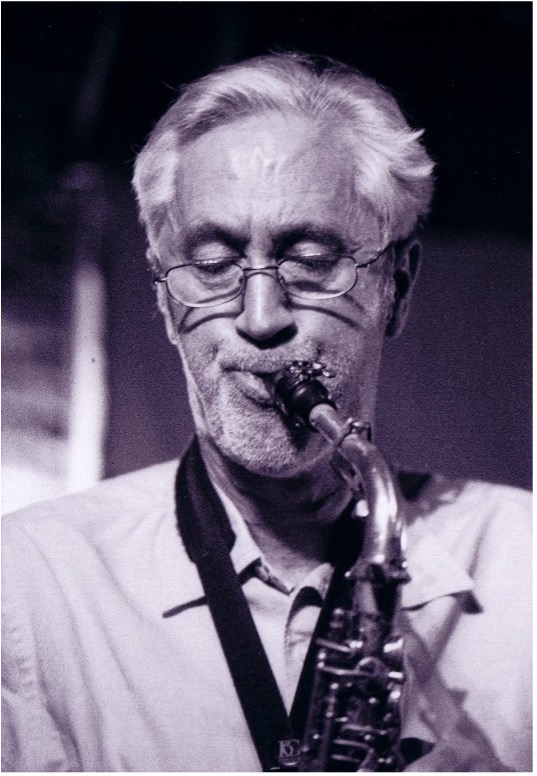
Chis Biscoe (left) will be joined by a stellar line-up to take some of Westbrook’s great pieces out of their context and play them with a small jazz group as you might an
Ellington, Monk or Gershwin song while always retaining their distinctive character.
The arrangements are simple or created in partnership with the members of the quintet. The title track, Music Is, will be played twice, in its original ballad tempo, and in a spontaneous trio recasting as a medium tempo waltz.
However, ‘Music Is: Chris Biscoe Plays Mike Westbrook’ is more than simply a celebration of Mike Westbrook. As critic Duncan Heining, author of the newly published ‘And Did Those Feet – Six British Jazz Composers (Michael Garrick, Mike Gibbs, Barry Guy, John Mayer, Keith Tippett and Mike Westbook) writes:
‘It is a tribute to a very fine, if quietly surprising, musician in Chris Biscoe.
‘Chris Biscoe can trade choruses with the best and melt your heart with the tenderest of ballads. But that is not what makes him special. Having heard him many times live and on record there is always a sense of quiet anticipation as he starts a solo. You know you are about to hear something new, something different.
‘It is more than his mastery of a range of woodwinds. It is more than the wonderful tone he achieves seemingly effortlessly on each of his instruments – powerful, rounded and majestic on baritone, elegant but slightly acerbic on alto, warmly lyrical on soprano and with a rich wooden timbre on clarinet. It is about the capacity to say something fresh and pertinent to the situation and occasion every time he puts mouthpiece to lips.The Westbrooks and many others knew this all along

Jazz On Air
Hot Biscuits presented by STEVE BEWICK
xxx

Recorded Jazz
Ringing Bells: new single from Jenny Bray
Preview by JOINED UP JAZZ

Jenny Bray noticed our piece about her last week and has shared it with her fan base. We were delighted to receive a new photograph from her which resonates very strongly with that article. You can see Jenny sitting in the body of the new arts installation, The Happisburgh Time And Tide Bell, on the Norfolk coastline. This art-piece also serves as the cover illustration for her new single, Ringing Bells, released on Thursday2nd November.
Jenny is also delighted that in October she was one of the 15 female artists featured in the Women In Jazz Media (WIJM) playlist.
She tells me, too, that she has also started to compile her answers to some interview questions we .sent over to her.
Ringing Bells will no doubt enjoy plenty of radio play, and I´m pretty sure that Steve Bewick will feature it soon on a Hot Biscuits plate. It’s a beautiful piece of music. It is recognisably a Jenny Bray track and knowing it is one of the included tracks on her forthcoming album early in the new year, we all certainly have something to look forward to, on the 2024 release of One Hare One Owl.
She delivers the lyrics in a melodic but nicely conversational manner and the instrumentation is quite wonderful with lovely, dreamy brass work, a gently driving percussion and some exquisite use of pizzicato on the strings .
Its a comforting work, and Jenny has spoken of the family memories it evokes for her.
I´m sure most who listen to the song will be reminded of pleasant pastoral times, but there will be many others, too, who will laud it for its jazz credentials and tasteful merging of vocals and instruments into one enthralling song.
There is musical intelligence here4 from the singer and all her playerts.


Live Music
Rochdale Music Society present Soprano Nicola Mills
review by GRAHAM MARSHALL
Rochdale Music Society’s concerts this Season 2023-24 are all being held in the parish church of St. Michael, Bamford, which provides a sympathetic acoustic platform for musical performance of all kinds.

On this occasion the wide-ranging sonorities of the soprano voice of Nicola Mills (right) reverberated with precision and poise throughout an evening of well-chosen operatic arias and songs from the shows to the delight of an audience which showed its warm appreciation by its enthusiastic applause.
There was Mozart and Puccini, Dvöŕak and Richard Rodgers – to mention just a few of the composers whose songs Nicola used to illustrate how her passion for singing and encouraging others to sing grew and continues to grow. She reminisced about her life from her childhood in the North West of England and on through her training years. These led to her performing all over Europe and North America in concert halls and in the streets of towns, which she continues to do to much acclaim.
A highlight of her performance on this occasion was a selection of songs made famous on stage and in film by Julie Andrews.
Nicola was not alone. Accomplished accompanist Maria King was at the piano when karaoke backgrounds were not being used, and perfectly matched Nicola’s presentation. She surfaced twice as a spectacular concert pianist herself, playing Gershwin’s Rhapsody in Blue in the first half of the concert and Variations on Chopsticks by Liberace in the second. Both rightly earned her great applause for her technical and interpretative skills.
All in all this was an unusual concert occasion for the Rochdale Music Society, but one that was most enjoyable and well worth promoting.
Rochdale Music Society regrets that we can’t record our concerts for public listening. But you can often hear our artists performing if you visit their website or search on YouTube. I may get round to adding some links to our website eventually! Best wishes
The Society’s next concert will be on November 18th and feature Jill Crossland, pianist, playing music by Scarlatti, Bach, Beethoven and Chopin. Details on the website: www.rochdalemusicsociety.org.

Manchester Music Festival
Live Music: The Emerson String Quartet Final Concert reviewed in New York Times
noted by ALFRED MICHAEL
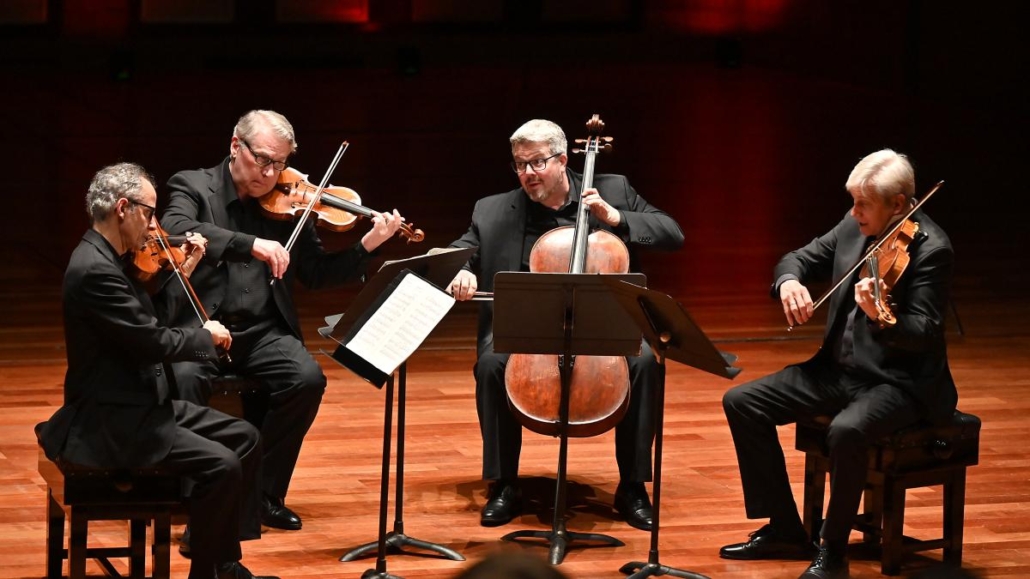
Last weekend, the famed Emerson String Quartet (right) concluded their Farewell season at Alice Tully Hall. The Quartet – violinists Philip Setzer and Eugene Drucker; cellist Paul Watkins; and violist Lawrence Dutton – performed Beethoven’s Opus 130 and Schubert’s String Quintet, which included the return of original Emerson cellist David Finckel.
The culmination of 47 years of excellence, the Emerson Quartet has earned its place in history as one of the greatest string quartets to ever grace the stage.
It was no surprise therefore that their final concert should have been reviewed on the pages of The New York Times, in which David Allan wrote on October 23rd 2023
Review: The Great Emerson String Quartet Takes Its Final Bow

A pillar of chamber music for nearly a half-century, the Emerson players (left) bid farewell with Beethoven’s Opus 130 and Schubert’s String Quintet. By David Allen Oct. 23, 2023, 11:57 a.m. ET Emerson String Quartet NYT Critic’s Pick Farewell to the Emerson String Quartet, a group that has beaten at the heart of chamber music in the United States, and far beyond, for almost half a century. More than two years after the essential string quartet of its era announced that it had decided to retire, its players took their final bows on Sunday before an Alice Tully Hall audience that paid them the best tribute any musician can hope to receive: listening, and listening well. The time was right, and the place was, too. It was on a Sunday in 1981 that the Emerson made its breakthrough on that very stage, playing all six Bartok quartets in a single, threeand-a-half-hour-plus sitting. The host of Sunday’s concert, Chamber Music Society of Lincoln Center, is the institution for which the Emerson served as quartet in residence from 1982 to 1989, and for which its cellist David Finckel left the ensemble in 2013 to co-direct. Finckel’s departure permitted his successor, Paul Watkins, to spend a decade with the violinists Eugene Drucker and Philip Setzer to his right, and Lawrence Dutton, the violist, to his left. Even at the end, as Finckel rejoined the group for one last performance of the Schubert String Quintet, Watkins looked as if he could barely believe his luck. Who would feel any differently? For if Sunday’s concert was a reminder of anything, it was that the Emerson String Quartet was never just a string quartet. It was an establishment, a touchstone, a catalyst. Entire generations of listeners grew up with its recordings, or made one of the hundred and more concerts it undertook each year, with famous collegiality, a habitual date in their diaries. As early as 1984, George Tsontakis had composed it a piece called “Emerson,” as if it already owned the genre; Sarah Kirkland Snider, the last living composer whose music it played, has written that, to her, the Emerson catalogue had appeared to be “the definitive interpretation of all the great string quartets in history.”

Music in Porstmouth
The Renaissance Choir
St Peter´s Church, Petersfield, October 2023
Review by PHILIP YOUNG
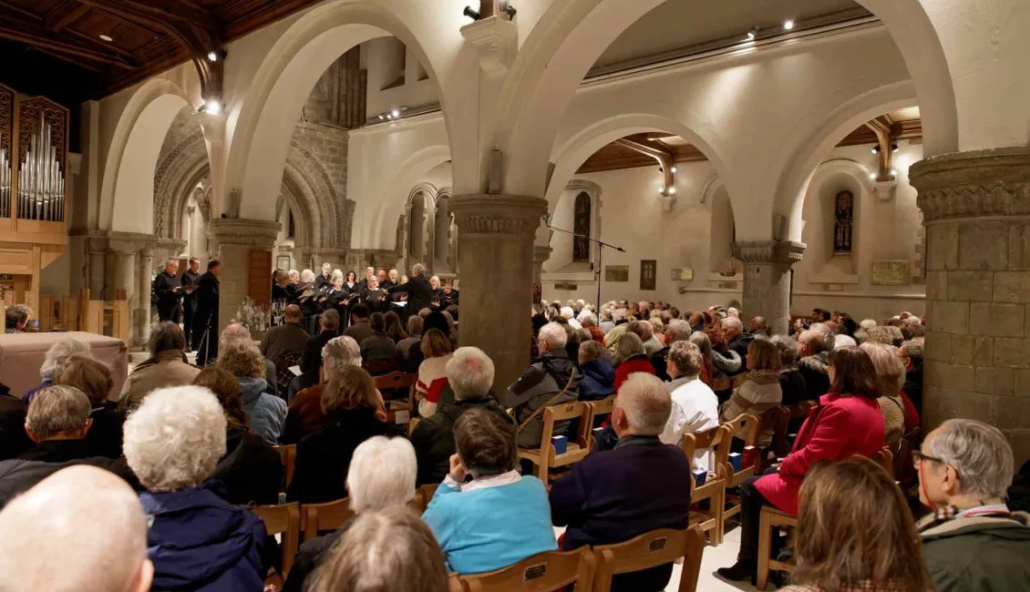
Ignoring the lure of ‘Strictly’ and the prospect of a rainy evening, the Renaissance Choir’s loyal followers (left) turned out in force for Saturday’s concert. ‘Sold out’ signs were on display and in his genial introductory remarks the choir’s conductor, Peter Gambie, welcomed a ‘record audience’ to the choir’s ‘home venue’ for a programme in which the major attraction was Mozart’s much-loved Requiem.
True to the choir’s name and the style in which it specialises, the concert opened with a beautiful, committed performance of William Byrd’s five-part Mass. The short movements were persuasively shaped, and longer sections were varied in tempo and vocal colour to match the text. Notable moments included the darker tone at ‘Domine deus’, the arch-shaped span of ‘Cum sancto spiritu’, the warmth of the ‘Sanctus’ and the two energetic ‘Hosanna’s. The final Agnus Dei was magical, involvement etched on the faces of the singers as they brought the work to its prayerful conclusion.
Byrd’s Credo, much the longest movement in the work, was omitted on this occasion – for understandable reasons from the point of view of concert planning, however essential it was in the music’s original liturgical context. Instead, the first half of the concert concluded with Joseph Haydn’s short, rousing Te Deum, written some two centuries later than Byrd’s mass. In those two centuries church music had changed beyond recognition, and if nothing later in Saturday’s programme quite matched the polish of the Byrd, it was only because there were unavoidable compromises in performing music from the classical period without the original orchestral accompaniment. The Te Deum received a lively performance, with the choir members evidently enjoying the extrovert style of the music. Diction was not always clear in this long, unfamiliar Latin text, and entries occasionally took a moment to settle, but the singers launched themselves enthusiastically into the closing fugue, and made the most of the dramatic ‘non confundar’ section. St Peter’s organist Mark Dancer (who had joined the tenors in the choir for the Byrd) ably provided the florid orchestral accompaniment.
The fascination of Mozart’s Requiem lies not only in the greatness of its music but also in the mysterious circumstances of its anonymous commissioning and, of course, the fact that Mozart died during its composition. Süssmayr’s completion includes some quite lightweight movements and a good deal of repetition, but the power of the opening sections is overwhelming, and the choir gave a fine account of them, with sustained singing of the opening ’Requiem’ and precise articulation and tuning in the ever-more elaborate lines of the ‘Christe eleison’. The drama and contrast in movements such as the ‘Rex coelestis’ and ‘Confutatis’ were powerfully communicated, whilst the ‘Lacrymosa’ was broadly shaped and finished with a long-held chord, marking the end of Mozart’s original writing. As well as the organ, the orchestra was represented by a single trombone, stylishly played by Mick Davies – an idea that worked extremely well. He excelled in the big solo in the ‘Tuba mirum’ and also authentically supported the tenor line in the choruses (in the original score, three trombones share the alto, tenor and bass lines), adding clarity and the trombone’s typically dark colour to the part-writing. It is one of the choir’s strengths that it is able to draw soloists from its own ranks. Vanessa McAll, Melissa Wingfield, Michael Richards and Andrew Dickinson made a well-balanced quartet and blended excellently in the ensemble sections, with an evident feeling of rapport. The Recordare was particularly attractive, helped because the flowing accompaniment suited the organ so well. In some other movements, shading that is possible for string players was unavoidably missing, but overall Mark Dancer gave a fine account of the orchestral part, feet as well as hands flying (not once but twice) in the energetic sequences of ‘Quam olim Abrahae’. After the impressive block chords of the ‘Agnus Dei’, the return of the ‘Kyrie’ fugue to the words ‘cum sanctis tuis’ built to a magnificent climax and a long-held final chord, followed by several seconds of silence before the audience showed their appreciation in enthusiastic applause.

Music in Porstmouth
Chichester Music Society present Miriam Teppich & Pavlos Carvalho
review by CHRIS LINFORD

Chichester Music Society was pleased to welcome back Pavlos Carvalho [cello] and Miriam Teppich [violin] (left) on 10 October at the University of Chichester in the intimate music venue, The Cloisters. This was an ideal location for the programme that had been chosen by these two outstanding musicians.
After a charming opening violin solo playing a Partita by Bach, the duo chose to play Ravel’s Duo for Violin and Cello. This piece reveals the extraordinary range of textures which Maurice Ravel obtained from the combination of these two instruments. As the programme notes for the concert say, “The cello has to sound like a flute and the violin like a drum. No one is going to play it except a virtuoso.”
This proved to be absolutely correct, as CMS had invited two hugely experienced and outstanding musicians. They revealed to us the wide range of textures which Ravel managed to obtain from this instrument combination, and they played with such talent that there is no other word than virtuoso to describe their musicianship.
Borrowing from jazz and folk music, the musicians interpreted the composer’s written notes into a passionate and ravishing musical experience. Ravel has been praised for his “irony, colour and novelty” and, even though the piece is 100 years old, both Pavlos and Miriam brought a new interpretation both in their playing with such refinement and sensitivity in the slow sections, whilst playing equally with energy, engagement and virtuoso precision in the faster moments.
After the interval and the cello solo Dialogo by Ligeti, the concert ended with another virtuoso performance of Zoltan Kodaly’s Duo for Violin and Cello. Here the two instruments were constantly changing roles, thus enthralling the audience with the passion and originality provided by the musicians. From the opening bars where the Hungarian flavours were noticeable, the artists either plucked notes or stated the principal melodic theme as the fiercer textures of the music developed.
After the Adagio the passion ramped up and Miriam and Pavlos played with energy and passion as the finale demanded and this led to an emotional and superlative ending. The audience loved it and were so appreciative that an encore arrived. A complete contrast as this was an Argentinian Tango.
Chris Hough, Chairman of CMS, said after the concert, “We are so privileged to have had two such exciting and innovative musicians to play for our Society. We are very grateful to them for such virtuoso performances.”
The above reviews have previously appeared in the Music in Portsmouth newsletter


A Place For Poetry
by THE POET IN THE RAIN
Contemporary poetry is very much alive with many innovative publications every year. a
We therefore launch today an occasional called A PLACE FOR POETRY presented by The Poet In The Rain introducing you to some of the 21st Century’s most exciting UK poetry venues and their poets. The Poet In The Rain will deliver poetry news, preview forthcoming events, interview movers and shakers and music-makers and review the spoken and written word.
Today we can tell you about Poetry Now! being run by Dr Lucy English, Professor of Creative Enterprise at Bath Spa University and Co-director the Lyra Bristol Festival. The first session was held at The Gloucester Road Bookshop, Bristol, 6.30-7.30 on Thursday 6th October and will now run monthly. And it’s free ! Maximum 20 participants.
If you are interested please contact Lucy English on slamlucy@hotmail.com to book a place,
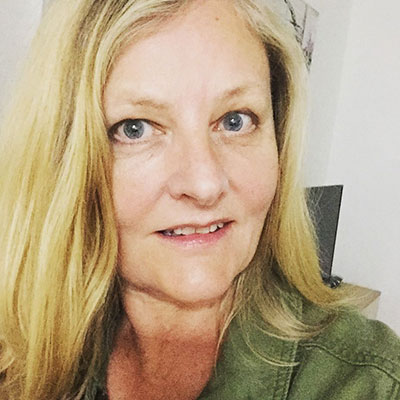
PHOTO 1 Dr Lucy English is a Professor of Creative Enterprise and The Spoken Word. She teaches on the undergraduate and Master’s Creative Writing courses. Her specialisms are performance/spoken word poetry, live literature and writing for digital platforms. She is currently the co-director the Lyra Bristol Poetry Festival. She is one of the organisers of MIX, the Bath Spa conferences in digital writing.
She is co-creator of the poetry film organisation Liberated Words, which curates and screens poetry films.
She has a PhD in Digital Writing, where she created the digital poetry film project, The Book of Hours.
She has three novels published by Fourth Estate: Selfish People (1998), Children of Light (1999); and Our Dancing Days (2000).
She is best known as a performance poet, first winning the Bristol Poetry Slam in 1996, then going on to tour worldwide, performing her poetry at many international festivals. Her first poetry collection, Prayer to Imperfection, was published by Burning Eye books in March 2014. Her second collection, also published by Burning Eye Books, The Book of Hours (2018), contains the poetry from her digital poetry film project. The Book of Hours was shortlisted for the New Media Writing Prize in 2019.
She coordinated the International Conference in the writing and practice of performance poetry at Bath Spa University and since then has run the first performance poetry module at a UK university.
In 2006 she was artistic director of Apples and Snakes Poetry Tour, Exposed. In 2007, she was a finalist in the first BBC Radio 4 Poetry Slam. In 2010-11 she toured the UK with the acclaimed Arts Council sponsored multi-media poetry show, Flash, and in 2014-2015 toured with Count Me In. She continues to perform and produce spoken word poetry.
She has toured Sri Lanka, India, Thailand and Taiwan with the British Council, running workshops and performances. She has also run workshops for Arvon. As an RLF consultant fellow, Lucy runs training workshops in UK universities. Lucy has been the co-director of Bristol’s Lyra Poetry Festival since 2019


A Reader´s Perspective
All Points Forward
Book Into Good Music suggests PETER PEARSON
Reading is one of my passions and since investing in an e-book reader, I don’t need a bigger bookshelf!

It’s surprising the number of older books that are now available as epub’s or pdf’s. Notwithstanding all this I still retain my library membership and make regular trips to the only section of Manchester Central Library (left) that was not ravaged when it was modernised; the music library.
Here are some of the music books I have in my collection that I can recommend:
Lets start with a couple of classical music selections:
I have a broad taste in music, in spite of the fact that I bang on about Americana music. My longstanding library membership enabled me to raid the music library LP’s and subsequently CD’s and it was an inexpensive way of experimenting with different music styles and composers. In this way and by attending classical concerts I have become a Mahlerian.


Norman Lebrecht runs a website-the slipped disc and writes books and articles on music and culture. Two of my favourites of his books in my collection are:
Why Mahler? How One Man and Ten Symphonies Changed The World:
This is not a dry scholarly text but an eminently readable chronological account of Mahlers life and of his musical output both as a composer and his day job, as one of the leading conductors of his generation.
photo 3 Who Killed Classical Music?
This book, (right) published in 1997 though still relevant today, takes a deep dive into the economics of the classical musical industry and argues that the corporate greed of the record labels, the super agents of high performing artists and conductors, has robbed the industry of its soul, hence the sub-title-Maestros,Managers and Corporate Politics.A very enjoyable and revealing read. For classical music you could also read pop music.
Now lets look at some of my favourite popular music books.

´
The Improbable Rise of Redneck Rock by Jan Reid
I was introduced to this book by Peter O’Brien when I subscribed to his John Stewart fanzine-Omaha Rainbow. First published in 1974 it tells the story of how in the early 70’s a bunch of country, blues and folk musicians came together to create the forerunner of Americana music known as Outlaw Country Rock centred around the legendary Austin Texas Armadillo World Headquarters and Threadgills venues. I soon found a copy of the book in Manchester Central Library and it is still available there. This edition profiles Jerry Jeff Walker, Michael Murphey, Steve Fromholz, Willie Nelson and the early adopters. Jan Reid updated the book in 2004 and I bought it for e-reading. The book inspired the USA PBS Austin City Limits music TV programme.
The updated version extends beyond the Austin music scene and includes profiles of Guy Clark, Townes Van Zandt, Joe Ely,Steve Earle, Robert Earl Keen and a host of other artists. It is a musical sourcebook of outlaw rock through to what is now termed Americana music

Which Side are You on (An Inside History of The Folk Music Revival ) by Dick Weismann
Published in 2005 I found this copy in Manchester Central Library and its still there, though I bought an epub version later when I feared it would disappear from the library shelves. It chronicles the history of folk music from its early days to modern day performers with chapters on the influence of performers such as Joan Baez, The Kingston Trio and John Stewart, Pete Seeger, The Weavers, Dylan, Paul Simon, Tom Paxton and a host of others.

Always A Song (Singers Songwriters Sinners and Saints ) by Ellen Harper.
Published in 2021 I have this in epub format. Ellen Harper is a musician and the mother of singer songwriter Ben Harper. This book is her musical memoir of growing up in California in the 60’s ( and yes Norm, John Stewart, a near neighbour, does get an intriguing mention) Her parents owned the legendary Folk Music Center in Claremont California whose customers included the likes of Pete Seeger, John Stewart, Joan Baez and a host of other folk musicians. The book covers both the music played and the musical instruments sold and repaired in the Folk Music Centre with some fascinating stories of the musicians she met.

Chinaberry Sidewalks by Rodney Crowell
Published in 2011 I have this in epub format. This is an autobiographical book of growing up in Texas as the son of dysfunctional but well meaning parents. Guy Clark eludes to this in his song Black Diamond Strings.
Told with humour and humility it is a fascinating and rewarding read and it covers his childhood life through to his becoming a singer songwriter, joining Emmylou Harris’s Hot Bband and marrying and divorcing Rosanne Cash.

Steely Dan-Reelin in The Years by Brian Sweet.
This is a must read for any Steely Dan fan, of which I am one. The early edition has been updated by the epub 2018 edition which I have. This edition covers their early life, creation of the band, break up in the eighties, re- uniting in the 90’s, through to the passing of Walter Becker in 2017.
Eminent Hipsters by Donald Fagen, the other half of Steely Dan.
This is perhaps an even better read, though much shorter, is Its a highly amusing story of his early life, meeting and forming Steely Dan with Walter Becker and life on tour with The Dukes of September (Fagen, Boz Scaggs and Michael McDonald) Touring under the Dukes of September banner was a much more spartan experience than with Steely Dan, involving sleeping on the tour bus and staying in crummy hotels. When he complains about this to his (also Eagles ) manager Irving Azoff he is met with the retort that I told you to call it a Steely Dan Band tour.

In it For The Long Run:
A Musical Odyssey -by Jim Rooney
Jim Rooney is a revered name in the Folk and Americana music industry. This autobiography charts his life from becoming a young musician, selling tickets at concerts and organising festivals to meeting the legendary musician and producer Cowboy Jack Clements and learning through him the skills required to become a much sought after recording engineer, songwriter, record producer and music publisher. He has produced albums by the likes of Nanci Griffith, Tom Paxton, John Prine, Iris Dement and ahost of other artists. The book is a great read and is one of those to which I frequently return.


Island Insights
We Don´t Do Halloween
says NORMAN WARWICK , but he´s only kidding
In last week´s PASS IT ON 24 Michael Higgins gave us a comprehensive history of Halloween and how it has been celebrated in the UK and USA and other parts of th world. It was fascinating stuff, and it may interest him to know (though I´m sure he already does) that while millions of people celebrate Halloween around the world, we on Lanzarote continue to celebrate our El Calbote festival just as some of the Canary Islands celebrate Los Finaos .
El Calbote is a festival that takes place in some parts of Spain on 1st November. Traditionally that is a time families travel to the inland countryside of our small island. They travel with family or friends to eat together the fruits of this time of year: walnuts, roasted chestnuts, pomegranates, apples, dreid figs and typical sweets. We also eat traditional foods such as potato omelette, meat stew, bread chicken and friend peppers etc..
As is the case in all The Canary Islands, too, this is a day on which always remember with joy the people in our family who have died.
Although we do not celebrate Halloween as such, we remain respectful of and share some of the fun of the celebrfations of people who have settled here from all around the world.
Nevertheless, Zombies, vampires, witches, werewolves, serial killers and all kinds of evil creatures filled the streets of the island on Tuesday evening when the little ones, and some not so little ones, dressed up to celebrate a party that, although it has come from outside, it seems to have done it to stay.
Halloween is celebrated on the night of October 31, but where does this holiday come from? I think we shoud refer you, if you have not alredy seen it, to the article in last week´s PASS IT ON by Michael Higgins, still available in our easy to investigate archives over 1,000 asrticles
In Lanzarote it is about combining new customs from abroad with the traditional Noche de Finaos, more in line with the Canarian idiosyncrasy. Both co-exist hand in hand with the different generations that enjoy them.
This year´s Halloween saw diverse actiovites and events in most of the islands major villages, townsd and cities..

Arrecife, (left) our capital, experienced a fun day and a terrifying Halloween night with multiple events scheduled by the City Council. The events began at 11 in the morning with a parade on Calle Real, where at 7 p.m. there was also a ‘Flashbomb Thriller’ and at 7:30 p.m. another parade by ‘Too Brass’ along with Mickey, Minnie and characters from Halloween. Also in the afternoon there were children’s workshops, one on Hermanos Zerolo street dedicated to the creation of masks and masks and another in La Plazuela to the creation of terrifying puppets.
Half an hour later, there was a special energizing meeting for Halloween begins at the Casa de La Juventud and at the Canary Islands Park the first edition of the ‘Hallween SpookFest Arrecife’ with a mechanical horror attraction. Also from 6 p.m. terrifying Halloween characters visited the commercial area of the capital of Lanzarote.
The space hosting the most panic activities was the José Ramírez Cerdá Park, where from 5 p.m., and every half hour, children’s s groups visited the ‘Haunted Mansion’. Half an hour later the face painting and pumpkin creation workshops began and the ‘Tribute To Day Of The Dead and Coco’ show by MT Dance, Mariachis,
Also in the José Ramírez Cerdá Park, the concert ‘Nightmare Before Christmas and the best of Tim Burton’ by Teguiband took place., before. the adult screenings of the ‘Haunted Mansion’ was held. Finally, La Recova also hosted a ‘Halloween Party’ with performances from 8pm by DJs Maxi and Checha, and live music by Gopar and company.´
A route through the heart of Arrecife for the “Noche de Finaos” was identified with Death acting as a guide on a tour that ended with a wine and chestnut tasting. The tour, departed from the photographer Gabriel Hernández’s Passage (alley of the former headquarters of the Local Police). It was Death herself who, throughout a thrilling hour and a half journey through the streets of Charco de San Ginés, connected with the past, tradition, wandering souls and legends of Lanzarote; But she was not acting alone, as she was accompanied by a group of professional actors, actresses and musicians. (Germán Barrios, Atteneri Caro and Beneharo Hernández). Spectators enjoyed the magic of storyteller Isabel Cabrera and the musical performance of Beni Ferrer, before enjoying their own wine and chestnut tasting.

In old Teguise (right) , the former capital, The Night of the Dead returned to Costa Teguise thanks to FELAPYME and the commercial area of the Teguise City Council. Eventsdbegan in the morning, with a terrifying parade in the Teguise Greens area.
Then, starting at 5:00 p.m., all the Chinijos came to the Pueblo Marinero dressed up for the occasion with painted faces. painting.In addition, they gave free rein to their imagination in the children’s workshops creating their own our Bag Of Sweets” or creating thier Coco masks and a bag of sweets was delivered to boys and girls (while supplies just about lasted). Likewise, there wasbe a fun 360º Video Booth, and the plaza was set out with a DJ and presenter.
Later, the III Children’s Costume Contest were held with three prizes of €100, €50 and €25 for the best, to be spent be consumed exclusively in certain shops and restaurants in Costa Teguise, where there was also musical entertainment in the Avenida Islas Canarias area.
To close the day, there was good music and fun in the Pueblo Marinero, featuring a spectacular special Halloween concert and, all culminating in the parade of the “Cumbacheros” rabbit troupe, which toured the commercial area.
Taking part in Halloween for the first time, the Old Civic Center of Costa Teguise hosted the mysterious HAUNTED HOUSE, a terrifying tour that was enjoyed, or endured, by all those who attended .

In Tías,(left) where we have seen several of the annual Three Kings parades through the twon over Christmas, days of preparation had been put into organizing events for a special event.. On Tuesday, October 31, the play Cuéntame un Finao was performed at the Tías Municipal Theater. A cast had also been scheduled in Leandro Fajardo Square, enlivened by the Tías Music School with a varied musical repertoire, with dried figs, roses, anise and roasted chestnuts on sale. The celebration concluded with a great Canarian concert at 8:45 p.m. by Almudena Hernández, José V. Pérez, Orlando Niz and Adrián Niz.

For this Halloween, 2023, the Haría City Council organised a programme dedicated to Finaos Night in order to honour this Canarian tradition. Among the events scheduled for tonight, there will be a theatrical production under the title ‘In The Light Of The Ccandles’, by the production company Vértice, which toured the Plaza de Haría.. In addition to the staged, activities and musical performances, people also enjoyed a tasting of seasonal products. It all opened with inclusive children’s and youth activities, through which traditional lantern workshops, face painting, a finaos gymkhana and snacks were held at the ‘La Tegala’ Cultural Centre. Additionally, in the Plaza de Haría, a workshop was held by Antonio Orellana and Acerina H. Toledo, within the framework of the ‘V Dance Festival’. Among the scheduled events there were musical performances by Rancho de Pascua, the Malpaís de la Corona Folkloric Group, Lajalada and the Pal’ Porrón and El Golpito parties.
In Tinajo, (right) businesses and restaurants d this festival that, surely, encouraged people in the area to go out and enjoy themselves as a community. With tickets from purchases made in local businesses until October 31, locals could enter the horrifying House Of Fear starting at 6:30 p.m. on October 31. There was a 360º video platform, in addition to children’s candy bag and costume workshops, face painting workshops, photo platform, tarot house, Halloween parade, a special musical performance and a contest of costumes starting at 7:00 p.m., with discount vouchers worth 150 euros, 100 euros and 75 euros to the winners to be redeemed exclusively in establishments in the municipality.
The children’s workshops had a capacity limited to 30 children per workshop who were registered on arrival. arrival. Candies were offered to the first 150 children and while supplies last. During the activity, attendees enjoyed a parade that toured the shops in the area and a DJ that will who provided a soundtrack to the entire commercial area of Tinajo.
The municipality of San Bartolme had planned various events for all audiences. An authentic House Of Terror was built in Playa Honda, which consisted of a terrifying tour in an installation set up in the Playa Honda Civic Center
In addition, a workshop on making terrifying masks took place too. Children were invited to make their own facial masks and makeup. Local artists helped the youngsters to achieve stunning Halloween makeup..

San Bartolomé (left) was certainly filled with excitement and scares. The zombies visit the commercial area and a giant photocall had been organized on Avenida Alcalde Antonio Cabrera Barrera. It seemed advisable to go in disguise.

In addition, the Cabildo (government) of Lanzarote and the Arrecife (right) City Council had reached a unique agreement for the first time to encourage the people of the island to participate in the consumption of Arrecife’s local commerce, through free entry to the tunnel attraction of terror, giving preference of access to those attendees who showed the ticket at the entrance for having purchased at a local establishment in the capital. This Tunnel Of Terror was located in the parking lot of the Arrecife Nautical Club right next to the Canary Islands Park. In this attraction, participants entered a mechanized tunnel decorated for Halloween, experiencing authentic chilling scenes. From 5:00 p.m. to 12:00 a.m., offering attendees and / or fear-lovers a unique opportunity to immerse themselves in a world of mystery.
In short, on October 31, the Parque Islas Canarias de Arrecife was transformed into the ideal place to celebrate Halloween. With music, terror, fun and surprises for all ages, it lived up to its promise to create a unique night that the inhabitants of Arrecife will be talking about for weeks afterwards.
But, we don´t do halloween,….not really !


We will, of course, send out Monday To Friday daily blogs as we follow our sidetracks and detours, and. we are intending to meet up with The Lost Cowboys and toi listen to their stories of being immersed in creativity. We will share a moment of just another mo0uning of Nanci Griffith as we take another look at all things Americana. We´re erxpecting to find rock and country still alive in there.
We will also be meeting up with The Real Ambassadors of Jazz
So well see you round the corner, somewhere along the happy trails !
.



Leave a Reply
Want to join the discussion?Feel free to contribute!